Key takeaways
- Edpuzzle transforms standard videos into interactive lessons, enhancing student engagement through embedded questions.
- Activist teacher resources promote critical thinking and social justice, fostering community among educators committed to equity.
- Integrating Edpuzzle allows for real-time feedback and accountability, empowering students to reflect on their learning.
- Selecting activist content that resonates with students’ experiences enhances engagement and encourages deeper discussions.
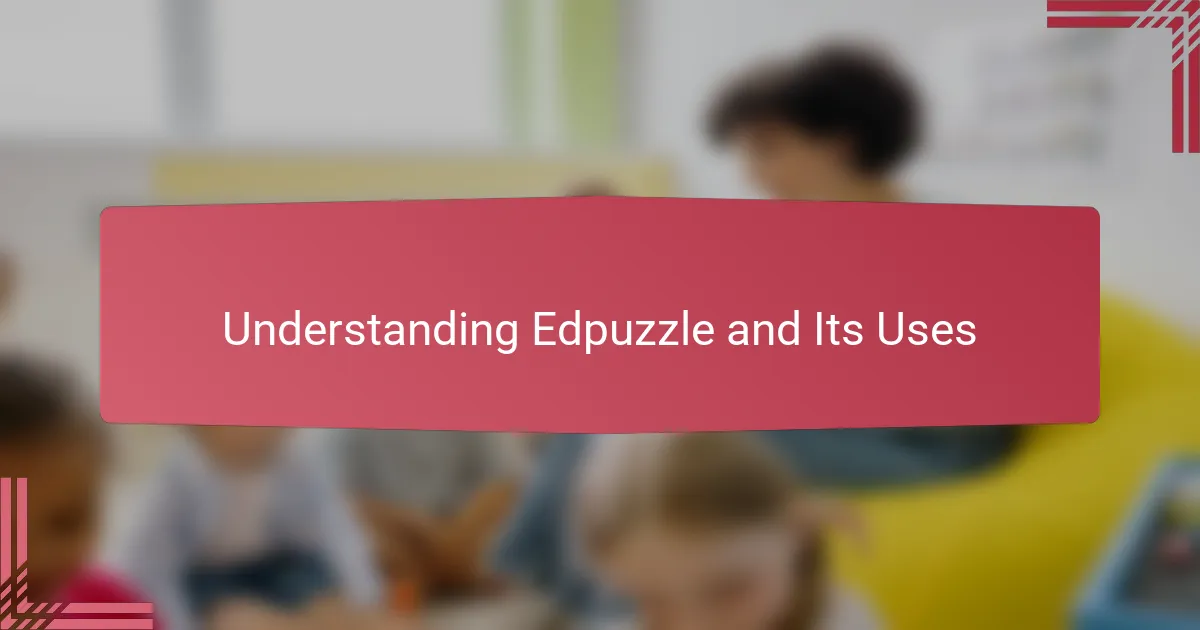
Understanding Edpuzzle and Its Uses
When I first encountered Edpuzzle, I was struck by how it transforms standard videos into interactive lessons. It’s not just about watching anymore; students can engage directly with the content through embedded questions and notes. Have you ever wished your students could pause, reflect, and respond without you having to say a word? That’s exactly what Edpuzzle offers.
What truly amazed me is the way it supports different teaching styles. Whether you want to check for understanding in real time or give students space to learn independently, Edpuzzle adapts. It’s like having a personalized assistant that keeps track of who’s truly grasping the material and who might need extra support.
I also found that using Edpuzzle helped me break down complex topics, making lessons more accessible and less intimidating. What’s powerful is seeing students engage thoughtfully rather than passively absorb information. In my experience, this level of interaction sparks curiosity and encourages deeper learning.
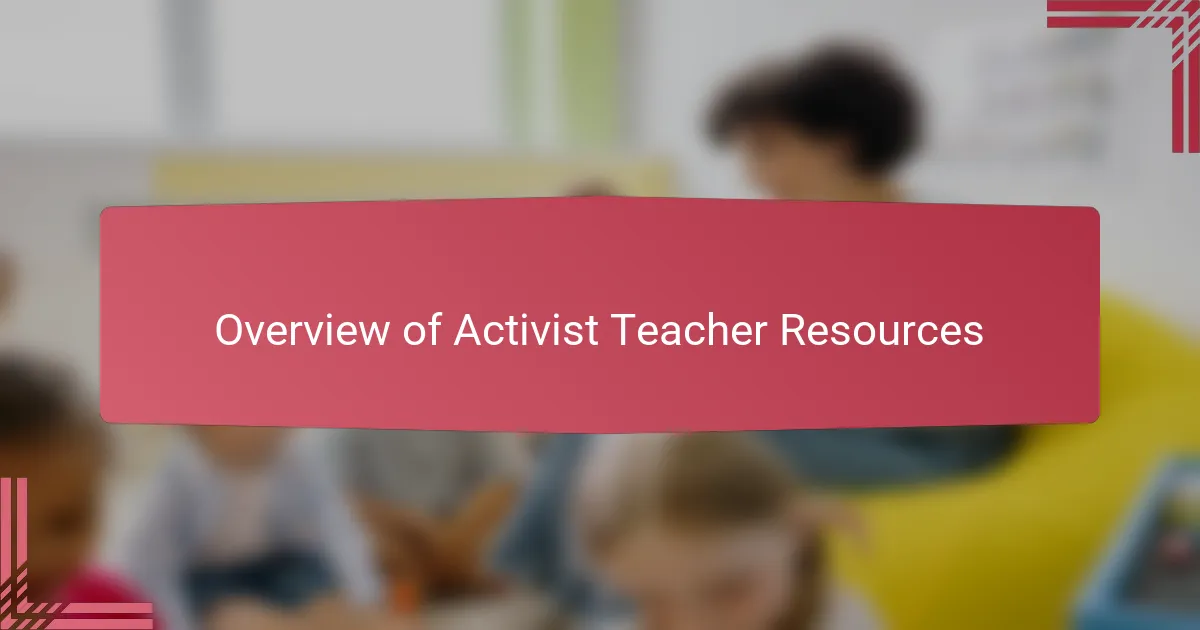
Overview of Activist Teacher Resources
Activist teacher resources are more than just tools; they’re gateways to meaningful change in the classroom. When I started exploring these resources, I realized they offer ways to bring social justice, empathy, and critical thinking right into everyday lessons. It made me wonder—how often do we truly consider the power our teaching materials have to shape perspectives?
What excites me most about activist resources is their flexibility. They don’t just deliver content—they invite students to question, challenge, and engage with real-world issues. I remember the first time I used a social justice video alongside a discussion guide; the conversations that followed were some of the most honest and passionate I’ve ever witnessed in my classroom.
These resources also create a sense of community among educators who share a commitment to equity and inclusion. Connecting with others who believe in using education as a force for good has energised my teaching practice. It’s more than curriculum enhancement—it’s a movement towards empowering the next generation.
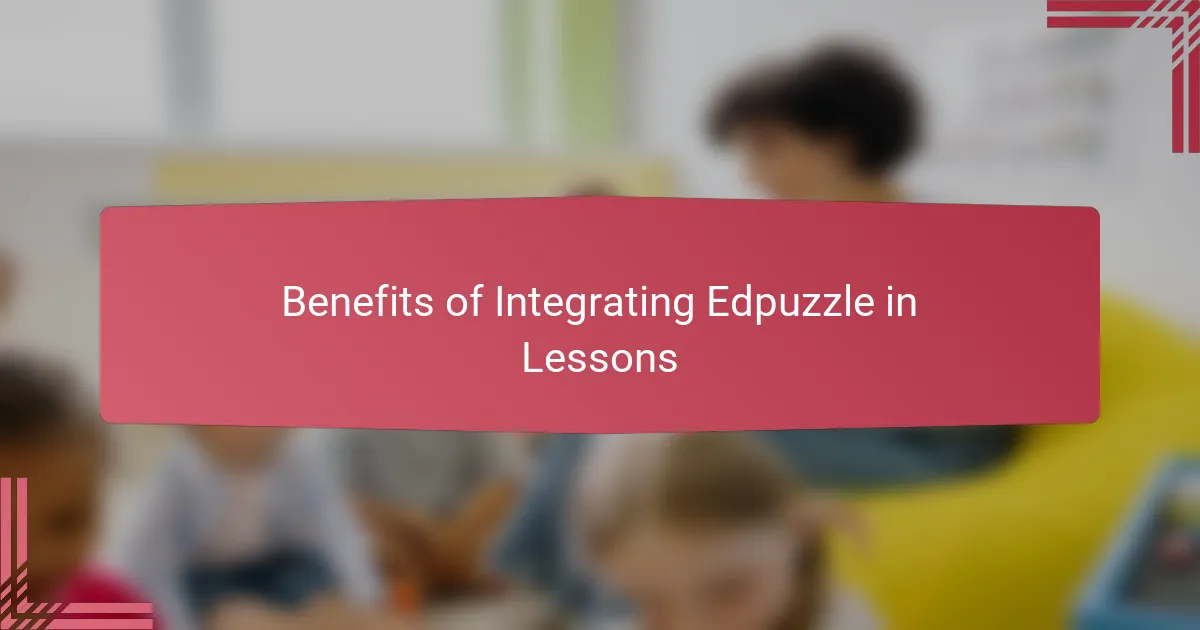
Benefits of Integrating Edpuzzle in Lessons
One of the biggest benefits I’ve noticed with Edpuzzle is how it fosters genuine student engagement. Instead of passively watching, students interact with the material through questions embedded right in the video. Have you ever seen a quiet student suddenly light up when answering a well-timed question? That moment of connection is priceless.
Another aspect that stands out to me is the immediate feedback Edpuzzle provides—not just for me, but for the students as well. It’s like having a pulse on their understanding in real time, allowing me to identify who’s grasping the content and who needs a little more support. This ongoing insight has changed how I pace lessons and tailor my follow-ups.
Finally, Edpuzzle brings a sense of accountability and independence that I didn’t expect. Students know their progress is tracked, which encourages them to be more thoughtful and reflective. I remember a student telling me, “It’s easier to focus when I know I have to answer questions,” and that really stuck with me as a reminder of how structure can empower learning.
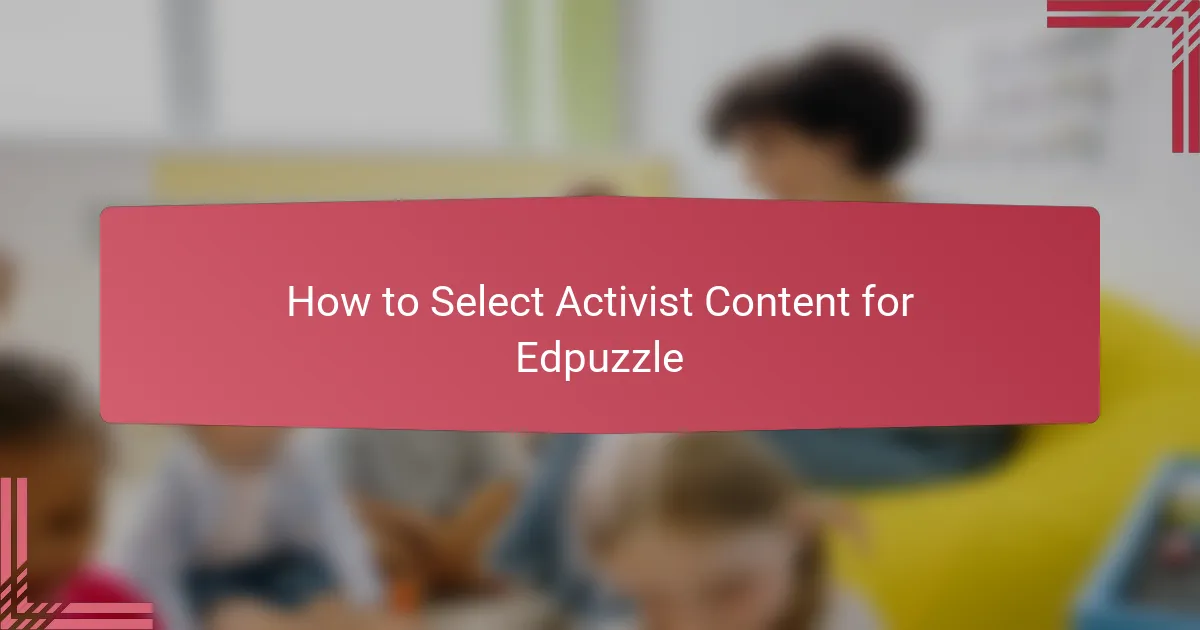
How to Select Activist Content for Edpuzzle
Choosing activist content for Edpuzzle can feel overwhelming at first, but I found that focusing on videos that genuinely spark critical thinking makes all the difference. Have you ever paused to consider whether a video challenges students to question the status quo or simply presents facts? That’s the lens I use—does this content provoke curiosity and invite reflection?
I also noticed that the best activist videos are those that connect with students’ lived experiences or current events. When I included a video about youth-led climate movements, the classroom energy shifted instantly. It wasn’t just watching; it was like the students saw themselves in the story, which made their responses more heartfelt and urgent.
Another thing I learned is to vet videos carefully for bias and accuracy. Sometimes activist content can lean heavily toward one viewpoint, so I take the time to cross-check facts and offer guiding questions that help students analyze multiple perspectives. This approach has helped me cultivate a classroom environment where questioning leads to understanding—not just acceptance.
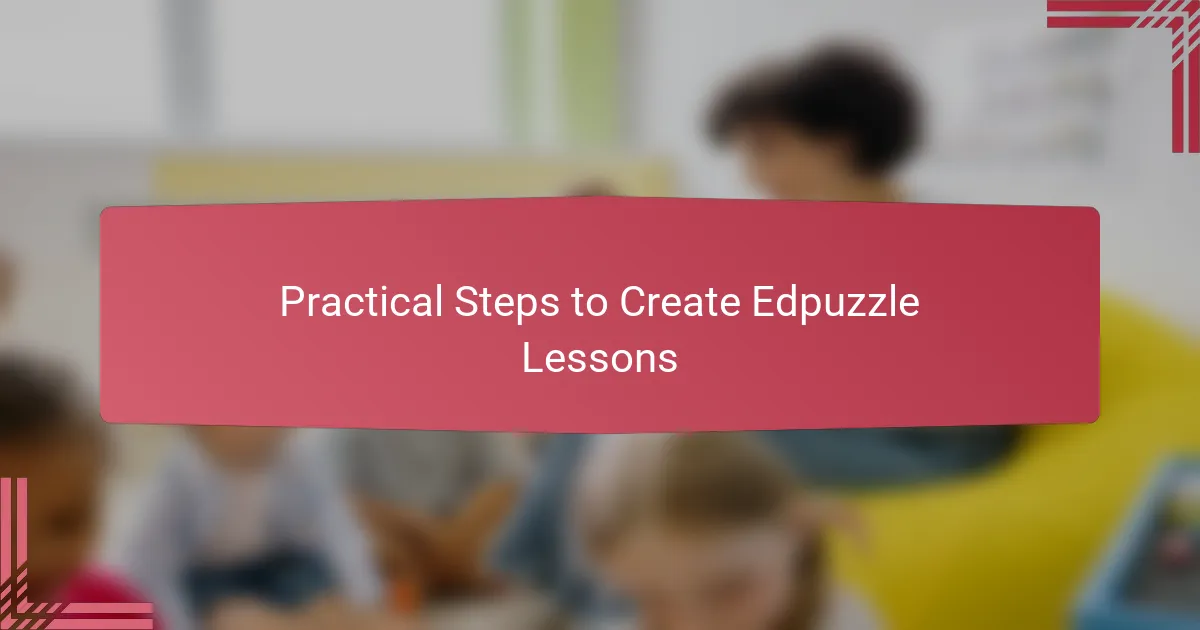
Practical Steps to Create Edpuzzle Lessons
Starting an Edpuzzle lesson begins with selecting the perfect video, which I’ve found sets the tone for everything that follows. Do you ever spend time hunting for just the right clip that feels both relevant and engaging? Once I find that gem, I upload it directly or choose from Edpuzzle’s vast library—this step always feels like unlocking potential.
From there, embedding questions is where the magic really happens. I like to pause and think: what moments in this video could spark curiosity or challenge my students? Adding multiple-choice, open-ended, or reflective prompts transforms passive watching into active learning. One time, I added a thought-provoking question about social justice mid-video, and the students’ responses were far richer than I expected.
Finally, assigning the lesson and monitoring progress is where you see the hard work pay off. The ability to track who watched, who understood, and who struggled gives me real-time feedback that shapes my next moves. Have you noticed how this data can shift your teaching from reactive to proactive? For me, this has been a game-changer in creating meaningful, responsive lessons.
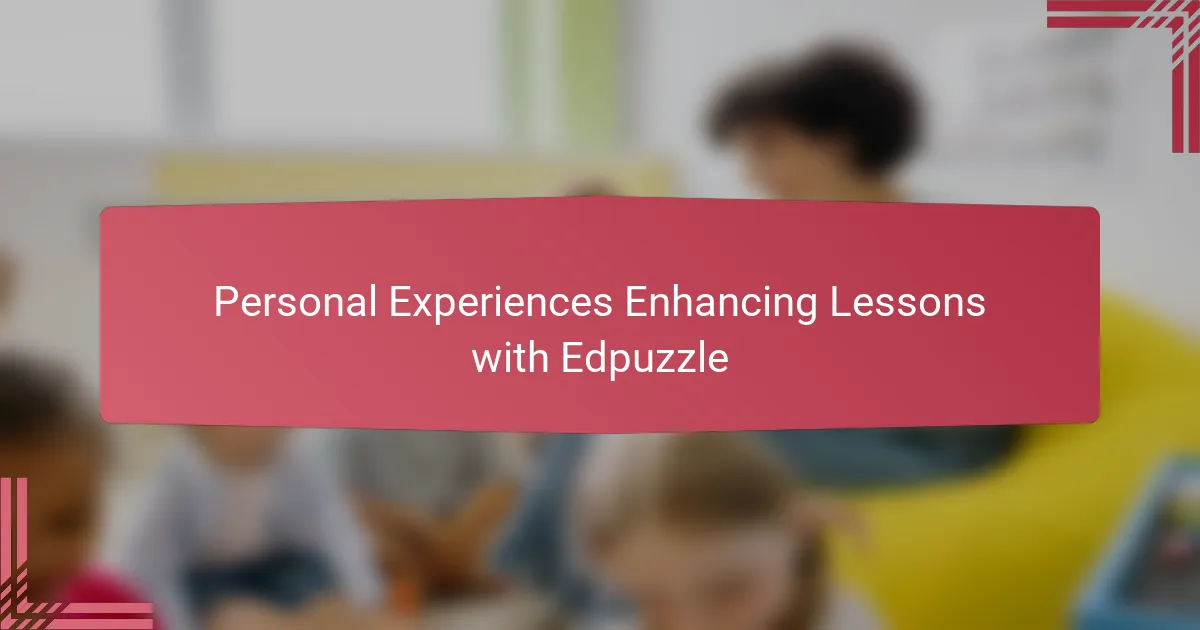
Personal Experiences Enhancing Lessons with Edpuzzle
Using Edpuzzle in my lessons has genuinely changed how I connect with my students. I recall one particular history lesson where a well-placed question within a video sparked a classroom-wide debate I hadn’t anticipated. It was thrilling to witness students not just absorb information, but actively wrestle with ideas right before my eyes.
There were moments, too, when I worried students might find the technology distracting or intrusive. Yet, I was pleasantly surprised by how many expressed feeling more confident because they could pause and reflect privately before answering. That layer of comfort seemed to unlock deeper thinking, something traditional lectures rarely achieved.
Have you ever wondered if a digital tool can truly foster empathy and critical awareness? From my experience, embedding personalized questions in activist-themed videos invites students to engage thoughtfully and emotionally. It’s as if Edpuzzle creates a private conversation between each learner and the material—a powerful step toward meaningful education.